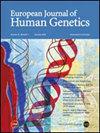Reanalysis of unsolved prenatal exome sequencing for structural defects: diagnostic yield and contribution of postnatal/postmortem features
IF 3.7
2区 生物学
Q2 BIOCHEMISTRY & MOLECULAR BIOLOGY
引用次数: 0
Abstract
In 30–40% of fetuses with structural defects, the causal variant remains undiagnosed after karyotype, chromosomal microarray, and exome sequencing. This study presents the results of a reanalysis of unsolved prenatal ES (pES) cases and investigates how postnatal/postmortem phenotyping contributes to identifying relevant variants. pES data was prospectively reanalyzed for unsolved cases enrolled in the AnDDI-Prénatome cohort study. Postnatal/postmortem data were included with prenatal features using Human Phenotype Ontology terms up to 3 years after pES. The reanalysis involved updating bioinformatic processing and querying raw data using a GREP query. We reanalyzed 58/94 (62%) unsolved pES cases, including 8 variants of unknown significance. Data for clinical examination at birth was available for all live newborns, and postmortem examination was available in 12 terminated fetuses. Additional features were identified at birth in 27/58 cases (44%): 9 terminated fetuses, 2 stillbirths, and 16 live newborns. One diagnosis (SNAPC4) was obtained through a periodic query following recent associations with human disease, and without additional clinical data. Three additional VUS were identified through reanalysis with the addition of new clinical features, illustrating the limited contribution of updated postnatal/postmortem phenotyping in identifying relevant variants after negative pES. In conclusion, the benefit of prospective reanalysis of unsolved pES is limited, even over time. Postnatal genome sequencing may be a more appropriate option than reanalysis with postnatal/postmortem phenotyping to establish a causal diagnosis.

未解决的结构缺陷产前外显子组测序的再分析:诊断率和产后/死后特征的贡献。
在30-40%有结构缺陷的胎儿中,在核型、染色体微阵列和外显子组测序后,致病变异仍未被诊断出来。本研究介绍了未解决的产前ES (pES)病例的再分析结果,并调查了出生后/死后表型如何有助于识别相关变异。对纳入anddi - pr natome队列研究的未解决病例的pES数据进行前瞻性重新分析。产后/死后数据包括产前特征,使用人类表型本体术语,pe后3年。再分析包括更新生物信息学处理和使用GREP查询查询原始数据。我们重新分析了58/94(62%)未解决的pe病例,包括8个意义未知的变体。所有活产新生儿均可获得出生时临床检查数据,12例终止妊娠胎儿可获得死后检查数据。在27/58例(44%)的出生时发现了其他特征:9例终止胎儿,2例死产和16例活产新生儿。一项诊断(SNAPC4)是通过对近期与人类疾病关联的定期查询获得的,没有额外的临床数据。通过添加新的临床特征,通过重新分析确定了另外三个VUS,说明更新的出生后/死后表型在鉴定阴性pES后相关变异方面的贡献有限。总之,对未解决的pe进行前瞻性再分析的好处是有限的,甚至随着时间的推移。出生后基因组测序可能是比出生后/死后表型再分析更合适的选择,以建立因果诊断。
本文章由计算机程序翻译,如有差异,请以英文原文为准。
求助全文
约1分钟内获得全文
求助全文
来源期刊

European Journal of Human Genetics
生物-生化与分子生物学
CiteScore
9.90
自引率
5.80%
发文量
216
审稿时长
2 months
期刊介绍:
The European Journal of Human Genetics is the official journal of the European Society of Human Genetics, publishing high-quality, original research papers, short reports and reviews in the rapidly expanding field of human genetics and genomics. It covers molecular, clinical and cytogenetics, interfacing between advanced biomedical research and the clinician, and bridging the great diversity of facilities, resources and viewpoints in the genetics community.
Key areas include:
-Monogenic and multifactorial disorders
-Development and malformation
-Hereditary cancer
-Medical Genomics
-Gene mapping and functional studies
-Genotype-phenotype correlations
-Genetic variation and genome diversity
-Statistical and computational genetics
-Bioinformatics
-Advances in diagnostics
-Therapy and prevention
-Animal models
-Genetic services
-Community genetics
 求助内容:
求助内容: 应助结果提醒方式:
应助结果提醒方式:


